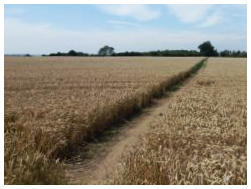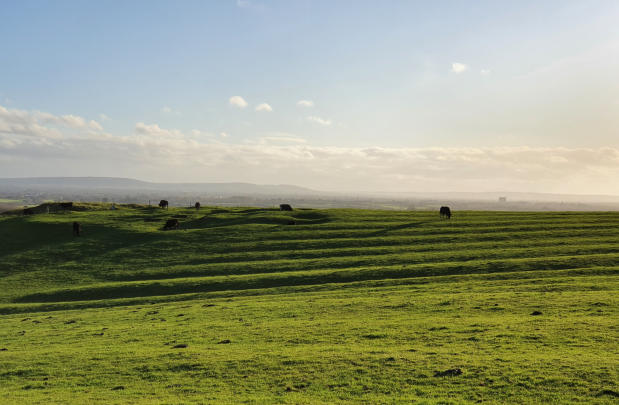


Until the twentieth century the business of the parish was primarily
agricultural. The land around Aston Abbotts was, and still is,
predominately pasture, but there is still enough arable land to
support various crops. In the 1700s a a farm labourer could expect
to receive a shilling (five pence or 7 US cents) for a days work in
summer, less in winter. By the nineteenth century this had risen to
12-13 shillings a week (about £1). This for a twelve hour day, six
days a week.
Everybody worked on the land, including women and children.
Small boys and girls were given the job of bird-scaring and by the
age of 10 or 11 boys would be old enough to handle the ploughing
teams.
Other important local industries were lace making and straw
plaiting (for hats and bonnets). In fact, by 1813 these were the two
primary industries in the county and many women and young girls
were employed in this trade instead of working the fields. However,
by the end of the 1800s the trade had dwindled.


Education was not a priority in those days. It was not until 1880
that it became compulsory and as a result many villagers prior
to then could neither read nor write. In 1867 the vicar of Aston
Abbotts complained that he was unable to find a man who could
read so could act as Parish Clerk.
This problem had been recognised earlier in the century and the
village school had been built in 1849. At first parents had to pay
for their children's education, but when education became
compulsory (and later free) all children attended the school. The
school continued until the 1970s, when dwindling class sizes
and changes in education forced its closure. However, the
building has remained and until the beginning of 2003 was used
as 'The Old Masters' Spanish restaurant. Now the old school is a
private residence.
Agriculture, Industry
Education

Low sun accentuates the remains of medieval ridge and furrow farming in Lines Hill South
Field, on the side of Lines Hill going west out of the village. To the middle-left you can see
some remains of early settlement earthworks.


- Photos
- Aston Abbotts - Winter Pictures
- Aston Abbotts How It Was
- Villagers Pictures - General
- Villagers Pictures - Ken Rhodie
- 630 Club Bean Competition 2011
- Astonbury X 2011 - Page 1
- Astonbury X 2011 - Page 2
- Astonbury X 2011 - Page 3
- Vic Scott Memorial Orchard
- Christmas Lunch 2011
- Peter Kent's Photographs
- Jubilee Picnic 2012
- Village Orchard - One Year On
- Village Orchard - Autum 2012 Planting
- Astonbury 2012
- Videos
- Interviews















